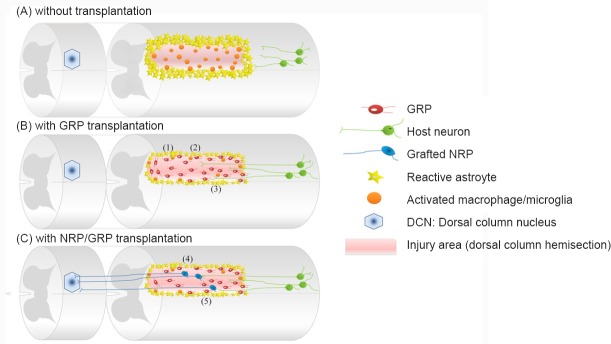Figure 1.
Glial restricted precursor (GRP) transplants provide a supportive environment following spinal cord injury (SCI) and can be used in combinatorial strategies to restore connectivity.
(A) Diagram of the dorsal column hemisection. The lesion border contains reactive astrocytes and a scar of chondroitin sulfated proteoglycans, while the lesion core is composed of activated microglia and infiltrating macrophages. Damaged host axons retract from the site of injury and the physical, chemical, and inflammatory inhibitors of axon growth. (B) Transplantation of GRP creates a permissive environment that provides for: 1) reduction of glial scar formation, 2) reduced activation of microglia/macrophages, and 3) support for axon growth and regeneration into lesion. (C) Transplantation of GRP together with NRP allows for the formation of synaptic connections between regenerating sensory host axons and graft-derived neurons. In this case, GRP transplants also support: 4) survival and differentiation of NRP into neurons and 5) synaptic connectivity for the formation of a neuronal relay. NRP: Neuronal restricted precursors.

